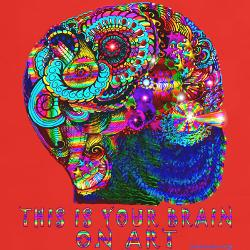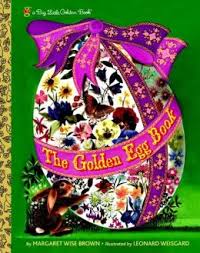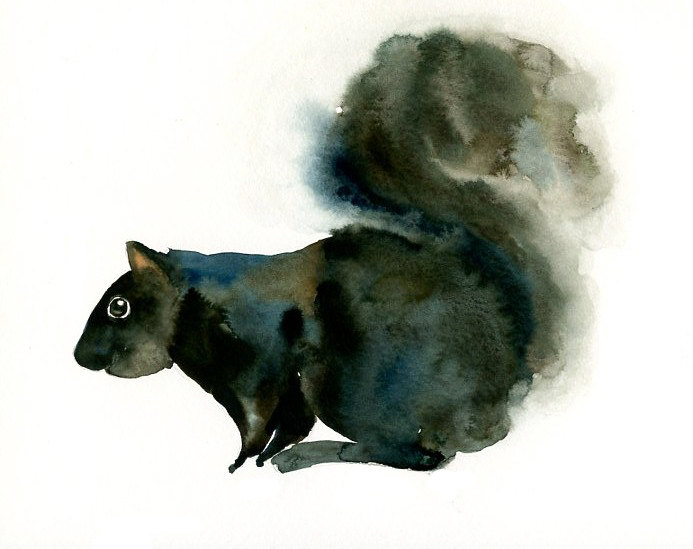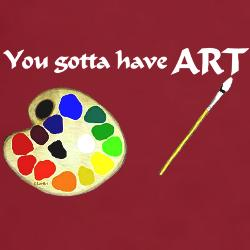Okay, so: If Reading is a Love Story and Writing is like Sex...
Then Art is?
Art is exciting!
You're going to see hundreds of pieces of art within a matter of a couple of hours - longer if you bring along someone who really appreciates art and doesn't prefer to remain "single," so that you can stop and really get to know what you are encountering. (Do not under any circumstances, as I once made the mistake of doing, bring along your very young children, who will have a contest to see how fast they can run through the building and still see a little bit of artwork along the way. I'm by no means saying that young children don't belong in an art gallery. They most certainly do. My mother took us to art galleries and I am eternally grateful to her, especially now when I have children of my own and can fully appreciate the adventure it must have been to drag five kids under the age of fifteen through the silent halls of any gallery. I'm just pointing out that it's hard to get to know a painting or a sculpture while walk-running in an undignified manner after your kids) Or maybe choose to go alone, because what you are about to embark upon is an adventure...
Some art you will love.
Some art you will hate.
If you are not a romantic as I am, some art will make you question whether or not it is even art at all.
Some art doesn't make sense to you.
Some art draws you in like a siren and makes you long for things you previously didn't even know existed.
Art will make you laugh.
Art will fill you with awe.
Art will be kind of awkward and set your teeth on edge.
Sometimes a work of art will start out kind of uncomfortable, but as you continue to gaze at it you begin to appreciate it for its finer points. That piece of art you might return to examine again later at more leisure.
There is art that seems finer than anything you own and doesn't seem as if it could possibly work out on your panelled apartment walls.
There is cosy, comfortable art that would work anywhere in your house or workspace.
Art that is too nice.
Art that is unpleasant.
Art that is loud and insistent.
Art that is quiet and gentle.
Art that seems childish.
Art that strikes you as stupid.
Art that is so clever that you think it's the cleverest piece in the room and you simply must buy it because all the other artwork bores you to tears.
Art that you think you might become friends with but could never fall in love with.
There are as many different forms of art as there are artists.
No two paintings are really alike.
Probably the most important encounter you will ever have with art is when you learn that you really can create it for yourself. I will call this Learning to Love Yourself. I personally believe that absolutely anyone can create artwork if they have the right mind-set, a lot of daring, and a little self-confidence. In order to make a work of art, you have to suspend that little disbelieving voice inside long enough to just do it. Take a plunge. Don't look back and whatever you do, don't look down. That's the adventure of it.
Bear in mind all the different varieties of art that you can encounter, some of which are listed above, and all the different kinds of relationships that various people have with artwork. Whatever you create, however you create it, and whatever it looks like, if you learn to love it and put love into it, someone else can and will love it, too. Feel free to apply that scenario to dating and relationships as well.
 Art is more than representative of different kinds of people whom you may meet; it is also the most direct line of communication that your insides have with the outside world. Creating a work of art is like pulling out your brain matter and slapping it on a canvass or forming it into a sculpture, or whatever other form of art you choose to express yourself with. A picture speaks a thousand words? A picture speaks to thousands of people instantly in thousands of different ways. A picture is like a mirror, a history lesson, a prediction of the future, a dream, a destiny, a familiar friend. You display your artwork; someone on the speed-dating circuit takes a glance and instantly decides what they think or feel about it. If you are sensitive, it is important to remember that whatever your art means to you will always be in your heart, perfectly expressed, but that they have a right to their own viewpoints and opinions, which are hardly an expression of your worth as a person so much as their own.
Art is more than representative of different kinds of people whom you may meet; it is also the most direct line of communication that your insides have with the outside world. Creating a work of art is like pulling out your brain matter and slapping it on a canvass or forming it into a sculpture, or whatever other form of art you choose to express yourself with. A picture speaks a thousand words? A picture speaks to thousands of people instantly in thousands of different ways. A picture is like a mirror, a history lesson, a prediction of the future, a dream, a destiny, a familiar friend. You display your artwork; someone on the speed-dating circuit takes a glance and instantly decides what they think or feel about it. If you are sensitive, it is important to remember that whatever your art means to you will always be in your heart, perfectly expressed, but that they have a right to their own viewpoints and opinions, which are hardly an expression of your worth as a person so much as their own.  Art is as natural as breathing. Almost as soon as they can sit up for themselves and reach out and grab objects, children are making art. Definitely the moment they can grasp a crayon you will find yourself some wall art on some occasion. This early spontaneity is something that art students sometimes struggle to return to so that they can let go of self-imposed limits and really create something exciting. Children produce such a massive quantity of artwork that there is scarcely room for it all, and parents or guardians have to come up with all sorts of creative display solutions - scrapbooks, screen printed on t-shirts, framed on the wall, posted on the fridge - I started an album on facebook and soon Shutterfly just to keep track of all that my daughter makes so that she feels appreciated but I don't get buried in piles of newsprint, construction and notebook paper.
Art is as natural as breathing. Almost as soon as they can sit up for themselves and reach out and grab objects, children are making art. Definitely the moment they can grasp a crayon you will find yourself some wall art on some occasion. This early spontaneity is something that art students sometimes struggle to return to so that they can let go of self-imposed limits and really create something exciting. Children produce such a massive quantity of artwork that there is scarcely room for it all, and parents or guardians have to come up with all sorts of creative display solutions - scrapbooks, screen printed on t-shirts, framed on the wall, posted on the fridge - I started an album on facebook and soon Shutterfly just to keep track of all that my daughter makes so that she feels appreciated but I don't get buried in piles of newsprint, construction and notebook paper.  As with any of my passions, my own artwork stemmed from my great love of books. In the first grade around Easter time, our teacher held a coloring contest. We were to decorate an outline of an egg, and the best decorated egg would win a prize. I don't remember what the prize was; for me the point was to emulate my then-favorite illustrated work, The Golden Egg Book, by Margaret Wise Brown. I filled that egg with a colorful, intricately-detailed profusion of flowers. Standing out in the hallway gazing anxiously at my creation compared to all the other lovely eggs, I overheard several classmates exclaiming how mine truly was the very best egg of all. I don't know for sure if I won, but this was the first time I was really proud of something I drew, most likely because no one but my parents have ever said anything nice about my pictures before.
As with any of my passions, my own artwork stemmed from my great love of books. In the first grade around Easter time, our teacher held a coloring contest. We were to decorate an outline of an egg, and the best decorated egg would win a prize. I don't remember what the prize was; for me the point was to emulate my then-favorite illustrated work, The Golden Egg Book, by Margaret Wise Brown. I filled that egg with a colorful, intricately-detailed profusion of flowers. Standing out in the hallway gazing anxiously at my creation compared to all the other lovely eggs, I overheard several classmates exclaiming how mine truly was the very best egg of all. I don't know for sure if I won, but this was the first time I was really proud of something I drew, most likely because no one but my parents have ever said anything nice about my pictures before.Like any child, I blossomed when encouraged in any way. I started drawing in all my free time. I drew so much that I ended up repeating the first grade because I kept drawing pictures on the back of all my schoolwork instead of concentrating on the actual work. For some reason, I remember drawing a lot of clowns with unusually long, color-striped legs.
In third grade my teacher had me design and draw her bulletin board for her one spring. This is also

the teacher who walked past my desk, spotted my watercolor of a squirrel, and said, "That painting is so good that it looks like a real squirrel!"
"I know!" I said with that level of smugness that only a third-grader can affect.
She shook her head at me. "We never take pride in our talents, young lady!"
I scrunched down in my seat and have been self-conscious about being visibly proud of my work ever since. I knew I could draw anything I set my mind to, but I didn't go out of my way to display anything I did.
In fourth grade I developed a love for Garfield and drew endless little comics to the exclusion of anything else.
As my writing skills developed my drawings fell by the wayside. Drawing came so easily to me that I took it for granted. I always loved any art project of any kind for an assignment, but for some reason I didn't draw as much as I wrote.
I remember there was a little comic contest in my world history class. The drawings were put up without the names shown and everyone was to vote for their favorite the next day. Mine was of Hannibal struggling through the mountains on a less than surefooted elephant, dangling fearfully from its leg. At the end of class, I was looking over the other drawings when my teacher came up and asked, "Which one do you think will win?"
"Mine," I blurted.
My face burned when he remarked, "You don't lack confidence, do you?"
After I got the drawing back with an A+ circled at the top, I saw the teacher had written "Heather, you were right!"
The best thing about high school was that you could be in art class all four years. (Joy!)

Imagine that, in this current political and economic climate!
The other best thing about high school was that the art teacher was completely crazy in a passionate , confident(obnoxious to some - I certainly was in no position to judge him for that) kind of way. How inspiring to meet someone who was good at their craft and proud of it, who spoke with authority when he pronounced that everyone in the class was going to leave it able to draw better than when they came (it was all drawing the first year, then painting, then a variety of other medium). This man wasn't a mere teacher; he was a missionary in the blackboard jungle (a lot of them were still black then). He had a message he was compelled to preach: That it was okay to be unique and that you had the power to change your life and the lives of others if you cared deeply enough and worked hard enough.
I was a complete sucker for this message, easily converted to his faith. I had always been fine at doing line drawings and cartoon people and animals, but this was two-dimensional drawing. I wanted to learn it so badly that I drew whatever I was told with complete trust that it would all make sense in the end, even after weeks or months of drawing gourds and piles of junk that he placed randomly on a table central to the room so that we could develop eye-hand coordination and really learn to examine what we were putting on paper. I learned the use of light and shade to create depth.
It would have been easy to give up.
Many others tried and failed because they didn't have the patience or the faith to push forward.
I held in my mind's eye the drawing I'd done on the first day of class. On the first day, he had sat in a chair and asked us to draw him. That drawing also was terrible. I looked but I did not see, right? But he promised us that he would sit down on the last day of school and that we would then draw him as he really appeared. This was better than an adventure - it was like magic!
Only magic that was really hard work.
And repetition.
And disappointingly ill-proportioned.
Finally I struck upon the answer: Suspend my disbelief in myself. For now, focus on the object and not the emotions. Look at the object and not look too closely, too minutely, at how I was copying it. Just draw. Don't over think it. It was like meditation, and when I figured it out, I could draw.
Magic.
My end of the year drawing of the teacher was great.
It wasn't my art yet, but it was just great.
Next year, painting class.
My early paintings were terrible.
I had to remind myself that they would get better if I kept practicing.
How to make this blasted paint shade my drawings as a pencil could?
How to mix the colors right, how to hold the brush right, how to control the strokes?
More hard work magic.
By the end of the year, I could copy a photograph with fairly decent results.
 In my Junior year of high school I was frustrated with my artwork. I could copy things, but I wanted to say something. I had this idea that art had to have meaning, that when I looked at something a "real" artist did, I should know what it meant.
In my Junior year of high school I was frustrated with my artwork. I could copy things, but I wanted to say something. I had this idea that art had to have meaning, that when I looked at something a "real" artist did, I should know what it meant. All right, all right already, I grumbled, so art doesn't have to mean something.
But my art would.
Once I made that decision and had a little skill under my belt, I found my art and I learned to love it.
I can draw something that's in front of me so that it looks exactly like itself upon the page - I know how to play that trick on the eyes with darkness and light, but I may never achieve the precision of a Warhol or God forbid a Norman Rockwell painting - I think I might have had to have finished art college to have achieved something like that. It doesn't matter. I have learned to love the bright colors and thick slabs of paint more reminiscent of Van Gogh or Pollock, the figures colored and shaped by my mood, like Monet or any other impressionist. Who knew?
For me, the important thing is to paint things that I care deeply about.
 When I finally came to these conclusions, I became an artist. I learned to relax and to have fun with my work. I loved my paintings, and my classmates and my teachers loved my paintings.
When I finally came to these conclusions, I became an artist. I learned to relax and to have fun with my work. I loved my paintings, and my classmates and my teachers loved my paintings.I found out that I had all kinds of things in common with my classmates that I had never known before. And finally they came to understand me as well. Instantly. Like magic.
I didn't realize when I set out to learn to draw two dimensional figures that I was really setting out on an adventure to find and accept myself.
Most protagonists in an adventure story don't see it, either.
That's what makes it an adventure.





No comments:
Post a Comment